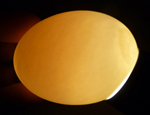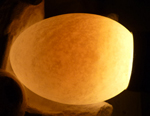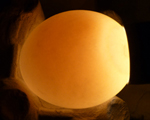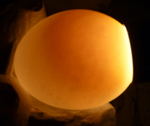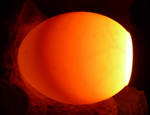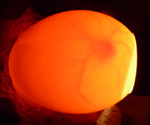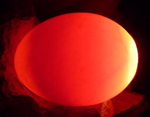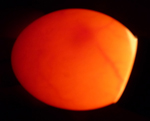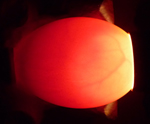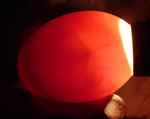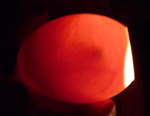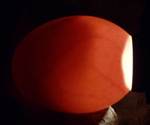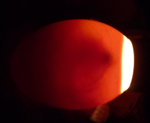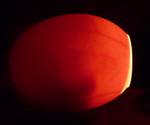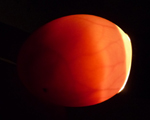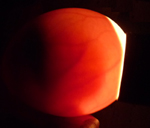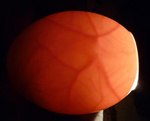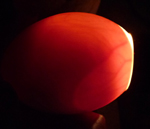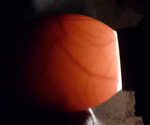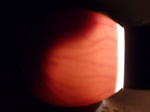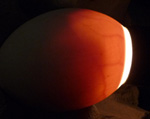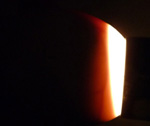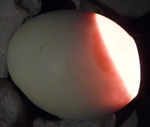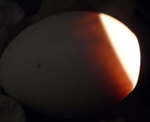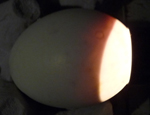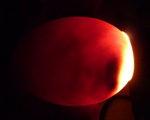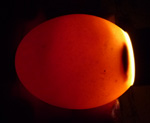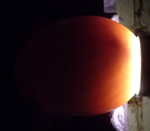Candling is an old term that means the application of bright light to an egg to see what is inside. Originally it was done by using candles in a dark room. Now you can use a flashlight or an actual candling light. Many hatchery managers will carry a smaller Mag flashlight (1/2" diameter) with them to spot check eggs. It is important, however, to have the room be very dark and that all the light from the flashlight or candling light go into the eggs.
If necessary, hold your hand around the end of the flashlight so no light shines directly on to the outside of the shell and bounces into your eyes. This makes it difficult to see inside the egg. All the light produced by the flashlight must enter the egg.
Below are pictures we have taken of
developing duck eggs, from Day 1 through Day 25. To determine if your eggs contain a living embryo, the most critical feature is the veins. If you see clear, distinct veins it is probably alive. If you do not see clear, distinct veins, it is probably not alive. By day 12 you can probably see movement if you hold the egg still during candling. The bright light is generally very stimulatory to the embryo. By Day 22, the embryo fills so much of the egg, you often do not see much other than around the air sac. If you candle on Day 26 or 27 you will often see the bill of the duck moving inside the air sac. At the bottom of this page we have included pictures of eggs that were fertile but died or became infected.
More Information on Incubating & Hatching Duck Eggs
